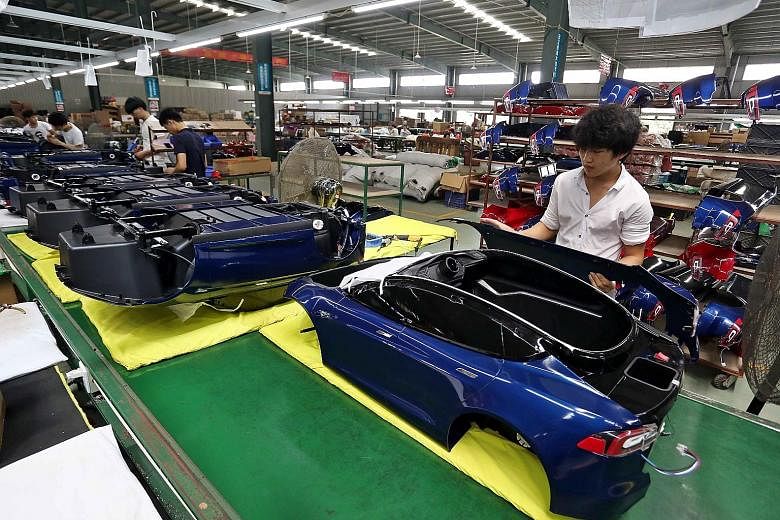Falling commodity prices and sluggish demand have drastically reduced the order books for Mr Ge Lilong, a second-generation owner of a metal recycling equipment maker in Wuxi, a city in coastal Jiangsu.
It does not make any sense for him to re-invest his profits into the business to expand capacity.
"Our orders for last year have dropped 40 per cent from 2010, and revenues have shrunk to US$5 million (S$6.8 million) to US$6 million from US$7 million to US$8 million previously," Mr Ge, 28, told The Straits Times.
For now, the general manager of the factory, which has 60 workers, prefers to hold on to his cash.
"We will only invest when we are confident that the economic conditions will improve in the next two to three years," he said.
This lack of business confidence among private companies has emerged as one of the most worrying trends for China's economy, the world's second largest.
Private investment growth slowed to just 2.1 per cent year on year in the first seven months of this year. It grew 10.1 per cent last year and 18.1 per cent in 2014.
Premier Li Keqiang has, in recent months, warned that a continued drop in private investment, which accounts for more than 60 per cent of the country's total investment, could derail its efforts in maintaining a growth rate of between 6.5 per cent and 7 per cent for the year.
In a meeting with provincial governors last month, Mr Li told them to cut the red tape and help encourage private investment.
China's private sector accounts for more than 80 per cent of urban employment and 70 per cent of total output.
And to help move the country up the value chain, the enterprise and innovation of private businesses are much needed.
Bank of Singapore chief economist Richard Jerram warned in a note recently that the sharp slide in private investment could imply that the recent economic stabilisation is not as sustainable as it might appear.
"It looks like the private sector is not convinced of China's growth prospects, or perhaps it fears state-led overcapacity or being crowded out of lending markets by state-owned enterprises (SOEs)," he wrote.
To address this, the central government last week rolled out plans to speed up cutting overcapacity in SOEs and opening up more sectors previously only reserved for SOEs to private and foreign investors.
China's top economic planning agency, the National Development and Reform Commission, last Tuesday announced it will open sectors previously dominated by SOEs, such as airport construction and oil drilling, to private investors.
In particular, the government wants more private investment in big-ticket infrastructure projects to give the economy a lift.
The move also includes shorter approval processes and offering private investors a level playing field with state-owned enterprises in the healthcare, education and infrastructure construction industries.
While these indicate that the government is refocusing its efforts on reforming state-owned enterprises, HSBC economist Julia Wang noted the pace had been "agonisingly slow" in the past three years.
For now, Ms Wang thinks the government should continue to support the economy with fiscal stimulus for at least three to four consecutive quarters.
"There is a lot of worry in the public space. What the private sector needs most is the confidence that growth will hold up."
Chong Koh Ping


